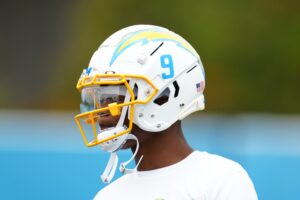Mike McCarthy held a press conference Thursday. The Packers head coach said that Tom Clements was moving on, but all other staff were staying in place. This left many Packers fans disappointed. There has been an tide of bile rising against the continued employment of defensive coordinator Dom Capers. Yes, some of this is scapegoat mentality, but there are some legitimate concerns. Capers has given fans plenty of reasons to distrust him and his scheme.
The Case Against Dom Capers
Dom Capers’ Early Success
Capers got his first defensive coordinator job with the Pittsburgh Steelers. The year before he arrived, the Steelers were the 22nd in defense in both yards (323.0 yards/game) and points (21.5 points/game). Capers immediately created improvement. In 1992, the Steelers were 13th in yards (291.1 per game) and second in points (14.1 per game). Over the two seasons that followed, Capers never led a defense that was outside the top ten in either yards or points.
One point that can still be argued about this great start is the competition. Eight of the ten worst offenses in football were in the AFC. The Houston Oilers were the only team in the AFC Central (as it was called then) with an offense better than 18th in the league (out of 28 teams at the time). Nine of the fourteen best offenses by yardage were NFC teams. It was the ending of the 49ers dynasty and the beginning of the Cowboys dynasty. After the 1994 season, however, Capers became the head coach of the expansion Carolina Panthers.
Dom Capers in a New Millennium
Capers returned to his work as a defensive coordinator with the Miami Dolphins in 2005. He inherited a defense that had been 18th in yards (317.4 per game) and 15th in points (19.8 per game). There was again, an immediate improvement. By 2006, the Dolphins were fourth in yards (289.1) and fifth in points (17.7). However, by the second year of his tenure, the defense fell to tenth in yards (342.2) and 30th in points (27.3). The entire staff was fired.
The net result was, two years after he took the position, the Dolphins were giving up 24.8 more yards per game and just over a touchdown more per game.
The Packers hired Capers as part of a staff shuffling before the 2009 season. Capers had immediate results again. In 2009, the Packers were second in yards surrendered (284.4) and seventh in points (18.6). They followed up this season with the championship season in 2010. In 2010, the Packers were the second best scoring defense (15.0) and the fifth best in yardage (309.1).
The drop-off has been swift and lasting. Since 2010, the Packers have not ranked in the top ten in either points or yards. In fact, the Packers have finished in the bottom half of the league in points allowed three of the six seasons. Also, they have been in the bottom half three times in yards surrendered. this includes the 2011 season where Green Bay was last in the league in yards (though only 19th in points). Since the championship run of 2010, Capers best defense was the 2012 team that finished 11th in both points (21.0) and yards (336.8).
Capers Facing Talent and History
The argument is that Capers was clearly working magic without talent. If you take the 53 man roster of the Pro Bowl teams and add ten players to replace those who were injured, each team would average 3.625 Pro Bowl players. In 2010, Capers had five Pro Bowlers on his defense alone. The very next year, Capers still had three Pro Bowl defensive stars and the team ranked last in yards (411.6) and 19th in points (22.4). Most recently, Capers saw Ha Ha Clinton-Dix go to the Pro Bowl on a defense that ranked 22nd in yards (363.9) and 21st in points (24.2). This defense also has Pro Bowl alternate Mike Daniels.
One year earlier, Clay Matthews III and Julius Peppers both made the Pro Bowl and the defense was 15th in yards (346.7) and 12th in points (20.2). Mike Daniels and Sam Shields were also alternates this year. Taking it back one more year, back to the 2014 season, the Packers finished with the 15th best defense in yards (346.4) and tied for 13th in points (21.8). The 2014 team had Matthews and Shields in the Pro Bowl and Tramon Williams and Julius Peppers were named as alternates. Capers has had talent.
One final point seems to really put these six years in context. Capers replaced Bob Sanders as defensive coordinator. Sanders was in that position for three seasons and inherited a defense that was respectable. His first year was rough as the Packers finished 12th in yards (320.9) and 25th in points (22.9). The team improved in the second year to finish 11th in yards (313.3) and tied for sixth in points (18.2). In this 2007 season, the Packers had two defensive Pro Bowlers: Aaron Kampman and Al Harris.
When the Packers defense saw a downturn in 2008, Sanders was shown the door. That 2008 team was 20th in yards allowed (334.3) and 22nd in points surrendered (23.8). For comparison, that would be 29.6 yards and 0.4 points better than the 2016 version of the Packers defense.
In Sanders’ three seasons his teams finished 25th, sixth and 22nd in points. Over Capers’ last three seasons his defenses have finished 13th, 12th and 21st. Sanders’ defenses were 12th, 11th and 20th in yards over his three seasons. Capers has led his defenses to 15th, 15th and 22nd over his last three seasons. Essentially, Sanders and Capers produced similar results over a three year stretch. The only difference is Sanders got fired and Capers gets another chance.
The final point is, six years of average to terrible results are no longer a fluke, they are a trend.






